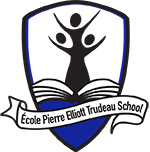STEAM Program Has Major Impact on Pierre Elliott Trudeau Elementary School

Whether it was from the Makerspace or any of the classrooms, there is a constant buzz of activity, as students enthusiastically work on different projects or exercises that were related to STEAM, which stands for Science, Technology, Engineering, Arts and Mathematics. It’s a multi-disciplinary initiative that promotes creativity and high levels of student engagement, as they perform a series of group projects that not only involve all the five school subjects, but also makes them more relevant, creative, discovery-based and interesting for students.
The Makerspace refers to a converted unused classroom which provides the tools and supplies that are more accessible to the students for their use towards accomplishing the exercise or project in question. It also helps develop an atmosphere where innovative creativity and learning can take place.
Right now, Pierre Elliott Trudeau, along with General Vanier Elementary School in St. Léonard, are the only EMSB schools that are employing STEAM as a pilot project during the 2016-2017 academic year.
“What I like about STEAM is that the students learn about responsibility and how to work together as a team,” said Grade 6 teacher Jennifer Lacroix. “They also learn about problem solving, engagement and risk taking, so that they can try something 500 ways in order to come to a solution. And most importantly, they are learning at an early age the necessary skills that they will need for the world that they are going into, because you don’t know what kind of jobs are going to be available when they enter the workforce.”
The quick impact that STEAM has had on this school is quite evident, with the many STEAM-related projects and exercises that are going on simultaneously. When visiting a number of classrooms throughout the school building, one will see some of the groups spilled out into the hallways because they require more room to accomplish their STEAM assignment of the day.
On one recent day in the school’s Makerspace, students from a Grade 3 class were designing and building their own Rapunzel towers. Through science, math and language arts, they were seeking to come up with an innovative way for Rapunzel to escape their specially built towers. In one corner of the Makerspace is a makeshift TV studio (complete with green screen), where the students recorded a video on the project. This explained how they built their towers and decided on solutions.
In a Grade 6 class led by teacher Patrick Charland, students teamed up to learn the basics of robotics and create their own robotic prototypes, which they chose from the search and rescue, sumo, soccer and dance categories. In turn, the robots they will create as a STEAM project will be used in a competition that will take place this spring.
“It’s fun to learn how robots work and what it takes to make them move,” said Alessandro, one of the students in Mr. Charland’s class. “And doing these projects helps me know more about robotics.”
Students in another Grade 6 class were making individual electronic circuit quiz boards that they are going to test out with a group of younger students. Combining mathematical knowledge and scientific skill, the quiz boards use an attached pointer to match a mathematical term with its correct definition. The pointer then lights up when the user chooses the correct answer.
“I like STEAM because it gives me a fun new way to learn things,” said Grade 6 student Sabrina, as she was testing out her circuit quiz board. “I am really proud of what I have accomplished so far, and it has helped grow my interest in technology. I hope to have a career in computer graphics after I graduate from university.”
A Grade 4 class learned about animals and nature by creating their own plant and animal adaptation displays. The students chose a specific animal, did some background research, and based on the information they gathered, built a display which tells about how their chosen animal adapts to their own environment.
Meanwhile, a Grade 2 class combined storytelling and geometry, as they built their own “automaton” diorama machines. The students were asked to come up with their own original character and write a story about it. After that, with the help of their teacher, they built and decorated their automatons (in which a shoebox was used as its base) that featured the character(s) they wrote about. The special feature of the automaton was the simple network of sticks and wheels underneath, which made the characters spin around. All of the students’ automatons were displayed on the bulletin board beside their classroom, which were accompanied by their original written stories, and allowed passers-by to operate any or all of the automatons that were displayed there.
Ms. Lacroix noted that since STEAM was introduced at Pierre Elliott Trudeau School back in September, reactions from the students to the STEAM program and the maker space have been very positive. “They are excited every time they go to the maker space,” she said. “I love seeing the big smiles on their faces when they do these exercises, because it allows for their creativity to come out, and the opportunity to figure things out for themselves by doing hands-on activities.”





